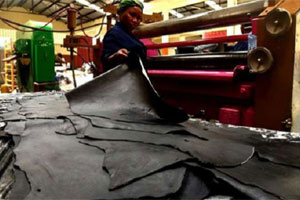
Plans are underway to construct a US$16m leather park in Kenya which will help transform the underdeveloped sector into a key economic supplier.
According to reports, the Kenyan government has already spent approximately US$ 5.7m in preliminary works including feasibility studies, development of a master plan and conducting a strategic environmental impact assessment for the proposed park.
Dr. Issack Noor, the Chief Executive of the Kenya Leather Development Authority confirmed the reports and said that apart from the above, the government has also embarked on phase two of the project after putting out tenders seeking a contractor to build a common effluent treatment plant at an estimated cost of US$ 10m.
“The leather park is a priority project because we want to grow the industry and make it very competitive in the region,” said Dr. Noor.
As much as the government is pushing for the realization of the project, some industry players are contending claiming that the park risks becoming a white elephant unless relevant laws are enacted to protect the industry and investors.
Currently, a precedent has been set after the government invested US$144,781 in six mini-tanneries in various parts of the country in 2012 that are now operating at below 15 per cent of their capacity.
Robert Njoka,Tanners Association of Kenya chairman, said the park will not catch the attention of investors unless laws are endorsed to protect the industry from cheap imports and the government cracks down on smuggling of hides and skins.
Also, 80 per cent duty on exports of raw hides and skins should be implemented by the government so as to ensure the local industry has an adequate supply of raw materials.
The leather industry is estimated to be worth US$ 100bn worldwide and despite Africa owning a fifth of the global livestock population, the continent accounts for a paltry 4 per cent of world leather production and 3.3 per cent of value addition in leather.
